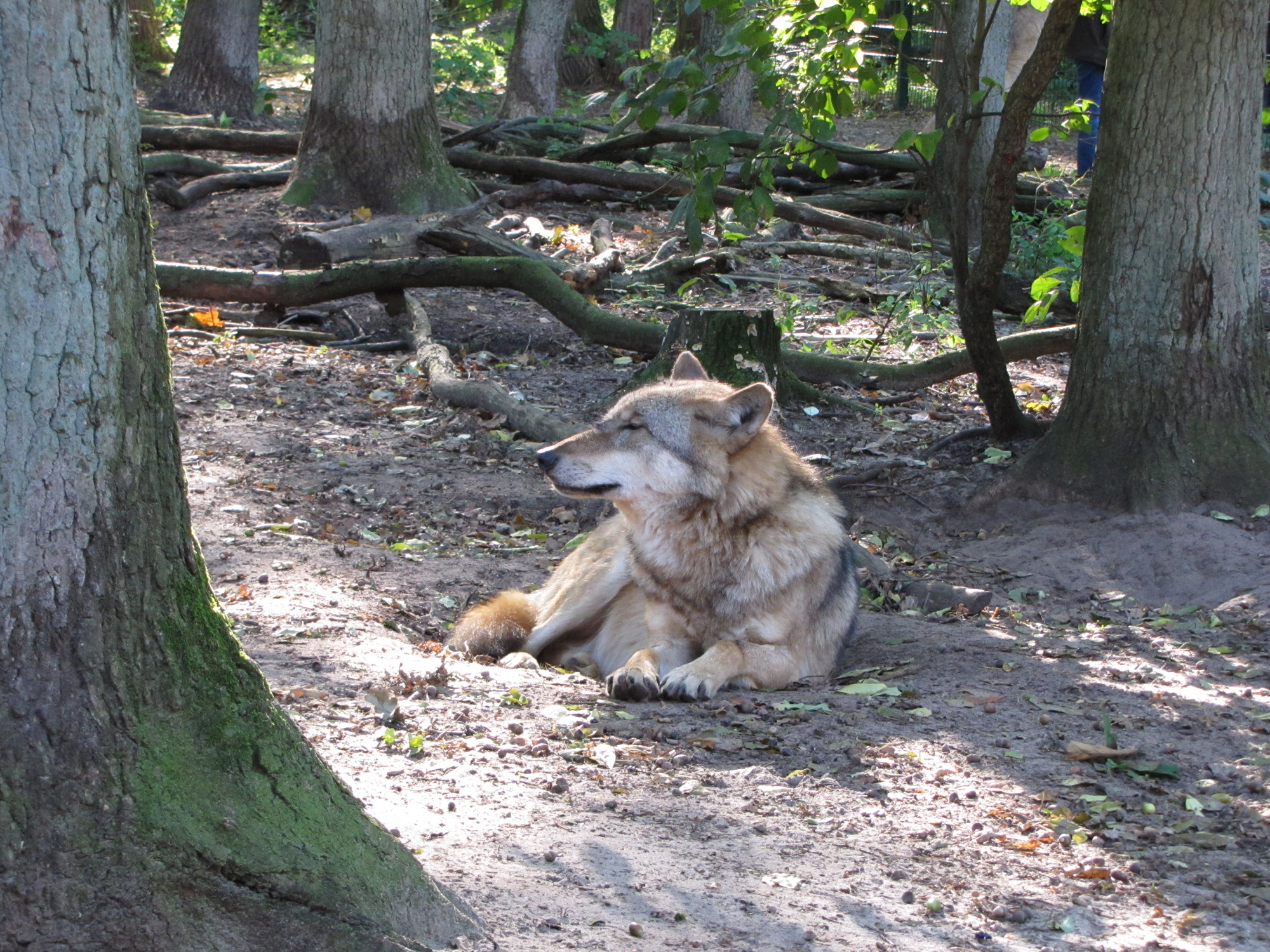Species: Gray wolf
Wolves used to occur throughout Europe but over the centuries, wolf numbers declined and in some countries they were eradicated through interactions with humans. There are approximately 13,000 wolves in Europe, predominantly in mountainous areas, and this number and the range are believed to be growing. Despite being protected in most European countries, the wolf is often seen as a pest to farmers and some illegal killing and/or harassment does occur.
These large predators are ancestors to the domestic dog and can be distinguished from most breeds through the combination of their size, (males up to 80 kg), pointed ears, long hair coat and downward-hanging tail as well as their distinctive howling. In the wild they tend to live in hierarchical family groups (packs) of up to 30 animals in areas where food is plentiful; young males may be travel long distances alone in order to find a suitable group of females. In Europe wolves prey on cloven-hoofed animals including dear, elk and wild boar as well as rabbits, hears, beavers and rodents. They may hunt in groups and tend to binge on a kill, consuming kilograms of meat in one go that will sustain them for days. Breeding occurs in the spring time and nests are typically found in caves or in amongst tree roots or underground.
There is more information about the gray wolf (Canis lupus lupus) available on the website of the International Wolf Center.
Ziekten Algemeen
Geen ziekten gevonden.
Onderzoeksresultaten
- Wolf died of a bacterial infection (22/02/2024)
- Dead wolf: healthy but days without food (06/12/2017)
Overige berichten
- Animal found on the A28 motorway was a wild wolf (14/03/2017)
Documenten en Publicaties
- Diversity of Hepatozoon species in wild mammals and ticks in Europe. Uiterwijk, M., L. Vojta, N. Šprem, A. Beck, D. Jurković, M. Kik, G. G. Duscher, A. Hodžić, S. Reljić, H. Sprong & R. Beck. Parasites Vectors 16, 27 (2023). https://doi.org/10.1186/s13071-022-05626-8
- The first wolf found in the Netherlands in 150 years was the victim of a wildlife crime. Gravendeel, B., G.A. de Groot, M. Kik, K. Beentjes, H. Bergman, R. Caniglia, H. Cremers, E. Fabbri, D. Groenenberg, A. Grone, G.W.T.A. Groot Bruinderink, I.Font, J. Hakhof, V. Harms, H.A.H. Jansman, R. Janssen, D.R. Lammertsma, I. Laros, L. Linnartz, D. van der Marel, J.L. Mulder, S. van der Mije, A.M. Nieman, C. Nowak, E. Randi, M. Rijks, A. Speksnijder & H.B. Vonhof (2013). Lutra 56 (2013)2. - ISSN 0024-7634 - p. 93 - 109.



